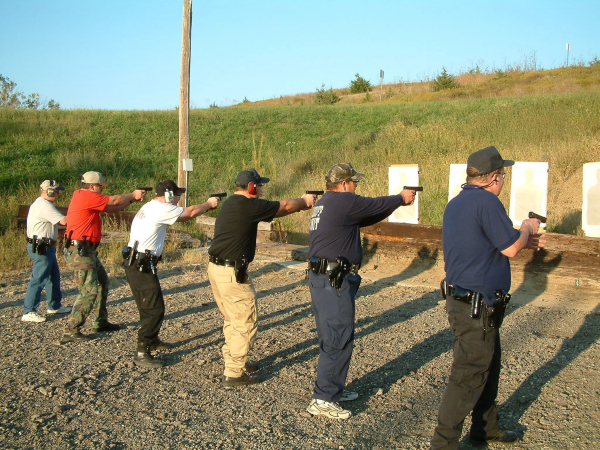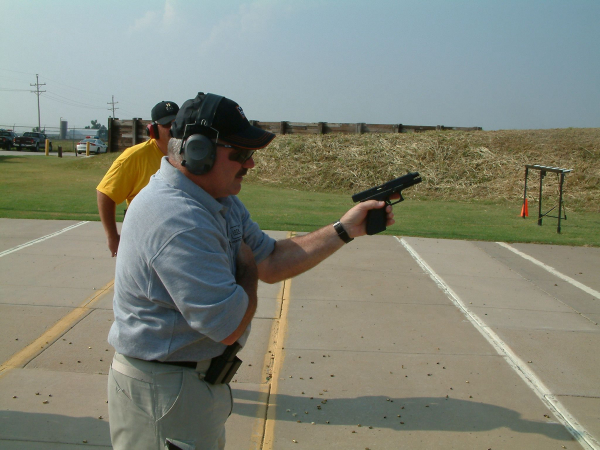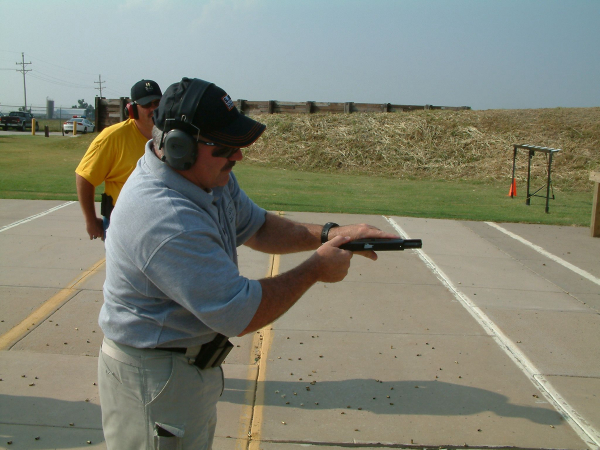Over the last year, I stumbled across a channel on YouTube called “HR Funk.” He has a video series called “Qualification Challenge Videos.” In these, his objective is to shoot the mandated law enforcement handgun qualification course from every state in the union. While some states don’t have a mandated course and others allow some discretion in the procedure for the courses, he does his best to get a representative course of fire from an agency in those states.
He uses a different handgun each time to “challenge” the course. The object is to evaluate each course in an effort to identify “the best.” He has identified elements that he considers important. Creating a spreadsheet, he compares each to those elements and the one with the highest score wins.
He has a system. I may or may not agree with bits and pieces of it, but he has a plan.
I can pick at his definition of elements as critical (e.g., ‘failure’ drills, shooting one-handed with either hand, shooting from cover, verbalization stage, decision-making/shoot-don’t shoot, moving target, shooting while seated, shooting at distance .. among others), but the issue isn’t with the content creator or his system; I’m not really a fan of “qualification” per-se.


As “HR” illustrates, there are a good many things inherent in these courses, things we should learn and things we should practice. But what should we test and how can we best test skills for the purposes of (1) supervision, (2) effectiveness of training, (3) documentation for internal purposes – retention, promotion, special assignments and (4) to supply information to the court in the event of criminal/civil litigation?
What? You thought this was about shooting?
No. The concept of qualification is a “documented standard of achievement.” Can the officer do the right thing in sterile conditions with the aim that another person can testify to the officer meeting the standard?
When I was close to retirement, I helped the outfit get a new handgun to issue and offered to help in the transition. I wrote up a class outline and specified two features relevant to this discussion. One was an accuracy test -- ten hits on a sheet of copy paper from ten yards.
This is for people used to shooting at a barn-size silhouette at the same distance – with any hit counting for something. Why copy paper? Partly for budget reasons, but primarily because I could keep the signed, dated page in the file to demonstrate that a specific officer shot the issued pistol for accuracy and had ten hits on that page.
That’s documentation. If they say “he couldn’t shoot,” I could produce the page and say, “Maybe not, but he sure did that day.”

Is it the same as the street? No less than any qual course in the USA. That didn’t end testing, but was simply a start.
We run line drills as “qualifications” so we can get “everyone through” in an orderly, proficient military manner. Looking back at the reasons for testing, I don’t see “getting them through” as an objective. “Getting them through” is laziness.
So in my transition, I had each person learn the skills likely to be needed – loading, holstering, unloading, safely drawing, a ready position to replace the hideously risky “gunpoint,” pivots and turns without muzzling people. After the training, each trainer took a group. Every participant got to perform each skill individually for the instructor’s approval – and documentation.


So Deputy “A” performed the needed skills on a date certain in the view of Instructor “B,” who documented it. If you’ve ever seen the IALEFI Safety Check (a non-shooting evaluation), it’s along those lines, but our people had to shoot – and hit inside the scoring rings of the TQ-15 we used at the time. Any other impact point was a miss.
This met the needs of training effectiveness assessment, supervision, retention and documentation.
It takes longer to accomplish the task and like every single qual course, doesn’t cover everything. What test really does?
A ‘test’ properly comes at the end of training (a ‘pretest’ is handy, to gauge progress). For the “qualification is training” crowd, I’d submit you’re in the minority of the instructor community – at least that was true “back when.”
The primary focus is the same as any testing to renew a driver’s license – to ensure there are no issues that need remediation before we allow you back on the road. Execution of the standards show some basic operational safety skills and has a (minor) marksmanship component. It takes longer to do, uses less ammunition and it features one officer performing skills for one documenting instructor.
I still like shooting drills and I still collect qual courses because I’m a student of the game. But I think the individual standards best accomplish the needs of the agency. In any event, HR Funk puts a lot of effort into his videos and his work is appreciated.
-- Rich Grassi
